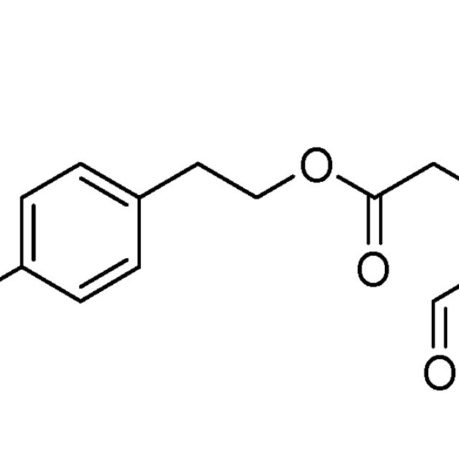
Philosophy & Health
Olive Oil Polyphenols
Let's get to know each of these amazing compounds - gifts of nature.
Find out more
Olive oil production and consumption as a health booster is a practice dating back to ancient cultures. The smartest thing to do is to respect this knowledge and enrich it, with modern science by our side.
We can draw two main conclusions from our ancestors’ therapeutic methods and advice. First, either as part of one’s diet or through its use in medical prescriptions, olive oil is beneficial to the human body. Second, not all olive oils are the same. They demonstrate different capacities, depending on the time of harvest, but also on the type of the olive tree.
Modern scientists, looking for natural raw materials with healing properties that could be safely tested on humans, without concerns about their toxicity, have traced their way back to "nutraceuticals" or "functional foods". That is, the foodstuffs that really have the power to nourish, as Hippocrates used to say.
Greek history and the ancient sources, encompassing centuries-old wisdom, have sparked modern research on olive oil. Research that has lasted for over 70 years, verifying the ancient knowledge, constantly enriching it with new, exciting data.
According to modern scientific studies, extra virgin olive oil is beneficial to the whole body, contributing to longevity and vitality, with its anti-inflammatory, analgesic, antioxidant and neuroprotective properties:
Fun Fact: Extra virgin olive oil possesses extra nourishing qualities! Both olive oil and the fruit it is produced from, the olive fruit, are full of antioxidant and anti-inflammatory polyphenols, such as oleocanthal, oleasin, eleuropein, and bioactive substances, such as squalene, flavonoids and lignans. At the same time, it is rich in monounsaturated fatty acids, chlorophyll, Vitamins A, D, Ε and K, calcium, phosphorus, potassium, magnesium, iron, zinc, selenium, copper and many more trace elements.

Let's get to know each of these amazing compounds - gifts of nature.
Find out more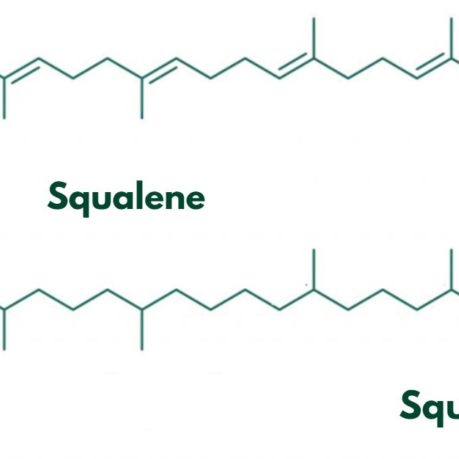
Super-cosmetic for the skin, an ally of the immune system.
Find out more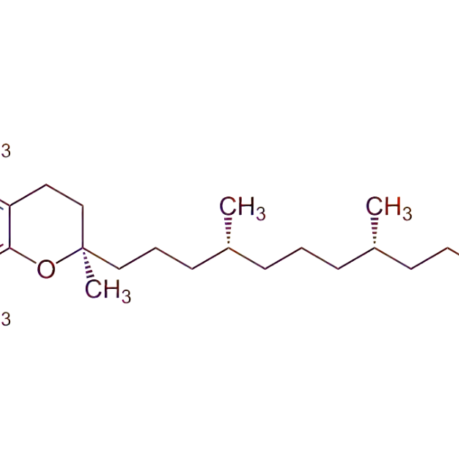
Antioxidant action in favor of youth.
Find out moreA lifestyle and gift of the Cretan land. This diet encompasses centuries-old, intuitive know-how on well-being and gastronomic pleasure.
“The quantities of oil they consume, oh God!” exclaimed Dr. Ancel Keys, an American cardiologist on a visit to Crete, once he saw the amount of oil that was added to the salad. In the late 1950's, he comparatively studied the health status of people in 7 countries, in order to investigate the relationship between diet and the occurrence of cardiovascular disease. The reason for the research was the low mortality rates and cardiovascular diseases observed in the Mediterranean region, especially in Crete. The study involved a total of about 13.000 men from 16 different regions of seven countries, which were: Finland, the Netherlands, Japan, the United States, Italy, Yugoslavia and Greece, of which the regions of Corfu and Crete participated.
The research resulted in the finding that, in Crete, cardiovascular diseases were almost unknown and neoplastic diseases were by far reduced, compared to all other countries. The observation was confirmed in time, as, after 20 years of follow-up, Cretans had the lowest death rates due to all causes, while, after 25 years of follow-up, deaths from coronary heart disease in Crete were dramatically lower compared to the United States and Northern Europe, even compared to southern European regions like Italy, Yugoslavia and Corfu (Keys 1970; Keys et al. 1986; Menotti et al. 1990; Menotti et al. 1999). [1, 2]
Interesting fact: Research results on the seven countries above, but also the data of international organizations, regarding the good health of the Cretans and the almost non-existent cardiovascular diseases and relevant deaths in Crete, in spite of the fact that Cretans would consume a much larger amount of fat (mainly in the form of olive oil), showed a relationship between their diet and cardiovascular health.
Later on, from 1988 to 1993, the French scientist, Serge Renaud, studied two groups of people who had suffered a heart attack. Both groups would follow a low – fat diet, one according to the instructions of the American Heart Association, and the other according to the rules of the Cretan diet. Mortality rates in the first group were increased by 70% compared to the second. Thus, the scientific world began to pay attention to “the Cretan Diet Miracle”. Get to know the Cretan Diet.
“Stop looking for a pill to replace the Cretan diet. There is no such thing.” Serge Renaud, ”Le régime santé” (Odile Jacob, Paris, 1998)
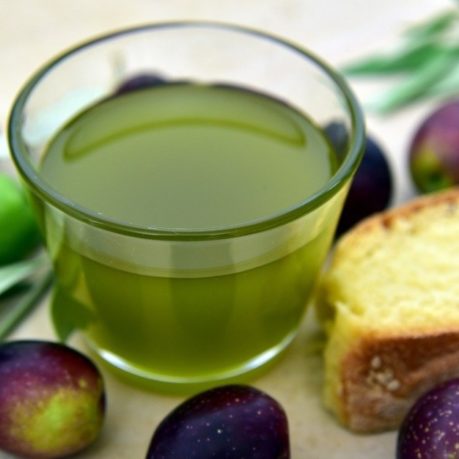
The foundations of the “Mediterranean diet” lie in Cretan practices.
Eat like in Crete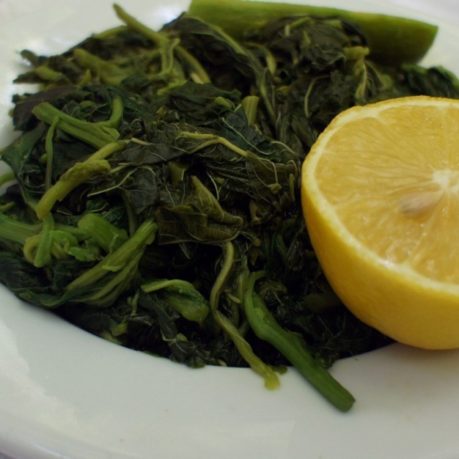
Wild or cultivated, greens are a must on the Cretan table.
Eat like in Crete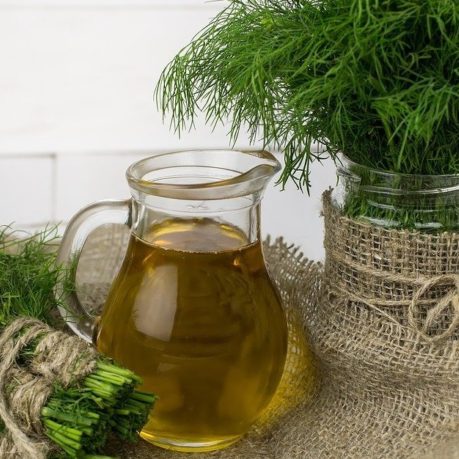
Finishing, sautéing, baking, frying, BBQ and desserts, perfect for everythi
Eat like in CreteApart from the traditional diet, the enhanced health status of the Cretans has also been attributed to their lifestyle. Getting physical exercise through agricultural work, relieving stress through mutual help and discussion, enjoying good company, joy of life and laughing together with their family and friends, sharing their daily dinner table, these are all habits of the Cretans, as well as of all Greeks, that date back to the Minoan years. Wine consumption is moderate, when circumstances require it, and always with company. Olive oil is consumed in abundance, as the main fatty element in food and salads. The consumption of raw and cooked greens from the rich Cretan flora constitutes a daily habit. Animal fats and seed oils are rarely consumed. Even in desserts, as well as in fried foods, no butter and refined oils are used, just olive oil.
Interesting Fact: The Mediterranean diet standard was set by health and nutrition scientists based on the 1960's Cretan Diet.
Nowadays, the epidemic of malnutrition and lack of exercise has greatly affected Crete, along with the rest of the world, as living conditions have changed. Everything can be reversed though, once one decides to seek the truth. Many Greek and foreign visitors, as well as young people with a nutritional conscience, are actively interested in learning about the Cretan diet or incorporating its good practices into their eating habits, preserving this global heritage of nutritional wisdom.
Did you know? Olive oil is the most similar food to breast milk!
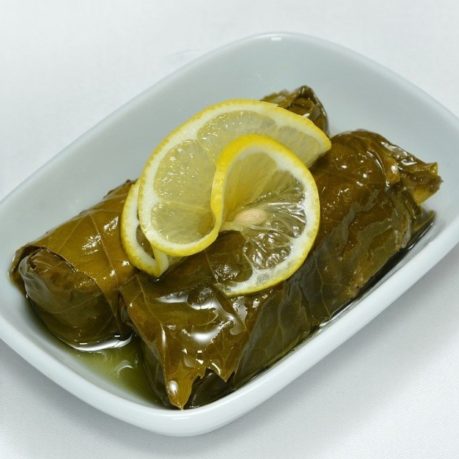
These small spring and summer appetizers carry an extremely gourmet philoso
Try it today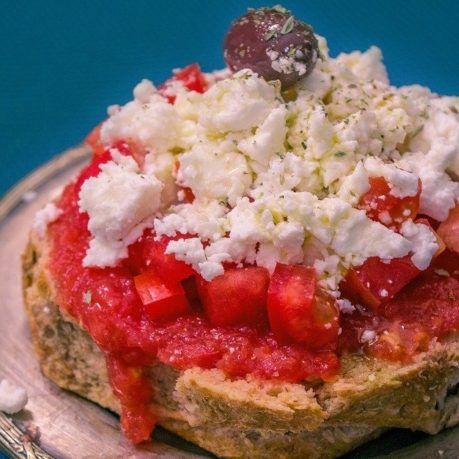
One of the healthiest and nutritionally smartest snacks in the world.
Try it today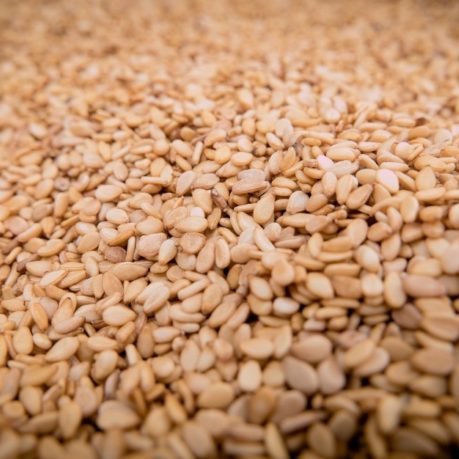
An addictive taste along with coffee or tea. High nutritional value.
Try it todayOur ancestors loved sports and were interested in testing the limits of their physical and mental vigor. Their only, authentic and clean fuel to achieve performance, was real food. They were very well aware of the body, mind and food relationship. Their habits are a great guide for us to regain the health and power of our body today. Modern athletes around the world also refer to these ancient habits. Olive oil in particular has always been part of the lives of athletes, since the ancient times. As food, as a means of hygiene and grooming, as medicine and as a valuable prize in competitions.
Fun Fact: According to Hippocrates, a healthy diet is a powerful therapeutic tool, but, for optimal results, it should be combined with exercise. As he used to say: “Food and exercise, as they have opposite properties, mutually contribute to maintaining one’s health” (Hippocrates “On Diet”)
Athletes need large reserves of energy. Olive oil can provide that energy in abundance through its good quality fats, mainly monounsaturated fatty acids in the form of oleic acid, and few saturated and polyunsaturated fats, such as linoleic acid. These fats, as we have seen, help balance cholesterol levels and regulate blood pressure, contributing to heart health. On the other hand, saturated fats, coming mainly from animal sources, can lead to high cholesterol levels, as can trans fats, which should be avoided.
Interesting Fact: According to certain studies, alkalinity can affect performance. Olive oil is one of the foods that alkalize the body.
Furthermore, while fatty foods are usually slow and difficult to digest and can cause athletes stomach cramps, olive oil is different. It is the most easily digestible fat, highly absorbable by the intestine, it reduces gastric fluid, facilitates the functioning of the digestive system, the bile and the intestines, and creates a lasting feeling of fullness without making one bloated. Additionally, for those following a ketogenic diet with limited carbohydrates, where the body must consume fat to lose fat, olive oil is the ideal solution to meet one’s daily needs in fats.
“Olive oil basically provides one with energy, something that athletes never want to run out of. Compared to those leading a sedentary lifestyle, who should not get more than 15% of their calories from fat, athletes need to get 20-30%. This applies to both stamina and high-intensity training cases. Fat is the body's main fuel for low-intensity, long-distance training, such as training for triathlons and marathons, but it is also essential for high-intensity exercise. Carbohydrates can be the main fuel for high-intensity activities, but, without fat, the energy of carbohydrates cannot be released.” Lori Zanteson, Olive Oil Times.
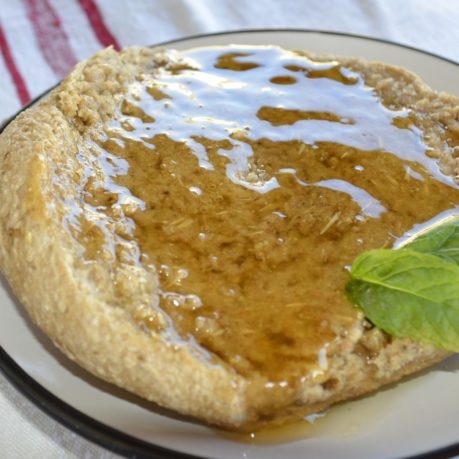
Energy and healing action. For those enjoying activities and sports
Prepare this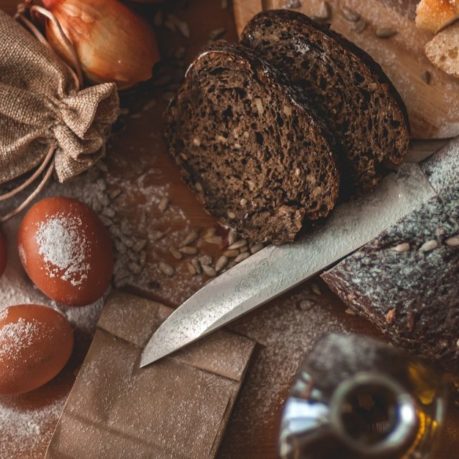
Good fats, concentrated nutrition. For the active and the athletes.
Prepare this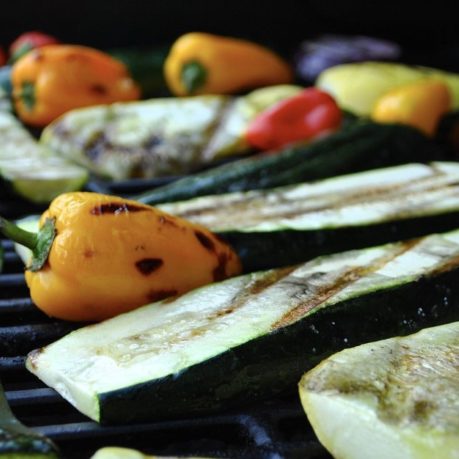
Hearty lunch, light body. For the active and the athletes.
Prepare thisA 2005 study, found that oleocanthal, an ingredient of olive oil, possesses strong anti-inflammatory properties, similar to those of ibuprofen, the analgesic widely used by athletes. Oleocanthal acts in a way similar to that of ibuprofen, inhibiting the action of enzymes that cause inflammation and, therefore, the production of chemical messengers causing pain and swelling. 50 g of olive oil equals 10% of an ibuprofen dose. This percentage may seem small, but regular consumption has long-term benefits for the body, such as reducing muscle pain, joint pain and stiffness.
Interesting Fact: The body of an athlete is in constant exercise and recovery. The systematic inflammation caused, affects performance. Olive oil contains anti-inflammatory substances, polyphenols, which fight inflammation and help the body rejuvenate.

Invigorating, cosmetic and antibacterial. Olive oil for sports massage and
Find out more
It happens to everyone, both those who exercise and to those who don’t. Oli
Find out more
Stronger body for athletes, through olive oil.
Find out moreHistory, culture and life lessons
A people’s habits, their customs, their own unique imprint on the planet, are significantly determined by their practices and where they live. This is also the case in the Mediterranean, where the olive tree has left its mark on the collective consciousness of the people. Nowadays, their habits reflect the olive oil culture.
According to traditions and legends, the Olive tree originates from the Mediterranean countries, where some of the most ancient civilizations of the world thrived; a point confirmed by archaeological findings. According to the two main scenarios, the origins of the Olive tree are traced either in Asia Minor, Syria, Israel and Palestine, or in Egypt, from where it is considered to have been transported to Southern Crete.
According to the French researcher Paul Faure, it was the Neolithic era inhabitants of Crete who domesticated the wild olive tree and transformed it into a cultivable, tame variety. In 1939, P. Anagnostopoulos argued that, according to excavation findings, Crete is the homeland of the olive tree. The lead of the Minoans in olive growing was due to the temperate climate, the geomorphology of the terrain and the intensity of agricultural production. The earliest evidence of olive trees existence in Greece comes from leaf fossils on the islands of Thira (Santorini) and Nisyros, which, according to Pichler & Friedrich, date back to 60.000 years ago. [4,5]
Fun Fact: Homer distinguishes between the wild olive tree, which he calls “fylii”, and the tame olive tree, which he refers to as “elei”.
Everyday life in Minoan Crete, the diet, habits and economy, everything would revolve around olive cultivation. The olive tree, along with their significant naval activity, played an important role in establishing the domination of the Minoans, both in the Aegean and the wider Mediterranean.
In many artistic performances, from as early as the Neolithic era, one could see the need of people to come into contact with olive trees. They would include those trees in epiphanies of the divine, dance devotional dances by them, touch them, as if they had meant to communicate with them. The olive branch was an ideogram of the Cretan pictographic script conveying the meaning of “tree” or “olive oil”, that survived up to Linear B. Olive stones, probably an offering, as well as ornate golden olive leaves, were found in tombs of the Minoan period.
Olive oil was not just food; it was also a source of lighting, healing, grooming, craftsmanship, as well as a commercial good. The olive tree would be an inspiration for art and customs, and become a symbol. The Sacred Tree is depicted on seals, clay pots, tablets, frescos, jewelry, as people would realize its value, steadfastness and ability to regenerate, by throwing new shoots from its old trunk every year. It would embody immortality.
Large storage facilities for agricultural products, full of decorated jars, probably used to store olive oil, were found in the palaces of Knossos and Phaistos. In Linear B tablets in Knossos, Pylos and Mycenae, information was found about the transactions and items related to olive oil and its use. For example, offerings of olive oil from Knossos to the sanctuaries of deities and to their priesthood, such as those in Dikti and Amnisos, for worship purposes, are mentioned on a Linear B tablet. In addition to its ceremonial use, one could also presume its medicinal use, for patients visiting the sanctuaries, in search of healing.
This belief in the divine blessing of healing, using olive oil as a therapeutic agent, survives to this day. Believers apply on themselves olive oil from church lanterns, for protection and healing. The Christian faith, as developed in the Mediterranean countries, has incorporated the ancient tradition into ecclesiastical ceremonies. Olive oil has been associated with the rituals around life and death, as well as with the hope of rebirth.
Throughout history, olive trees have symbolized the wealth of an area, as well as its structured social life. In order to organize oil production, people had to make the transition, from a nomadic way of life, to a collective peaceful living in one specific place. Peace and prosperity then favored the development of civilization. In Archaic times, especially in the cultural and olive-growing center of the time, Athens, the awareness of the opportunities offered through olive-growing, resulted in people valuing, respecting, even legally protecting, the precious olive trees.
Interesting fact: The Moria olive trees of Athens were considered Sacred trees, originating from the primary olive tree donated to the city by the goddess Athena. Their olive oil was given to the winners of the Panathenean games as a prize. These trees were protected by penalty of exile or death.
In Roman times, oil production and olive-growing knowledge would reach all parts of the empire. In Byzantium, the production of Crete was greatly reduced, but the consumption in the empire was enormous. During the Venetian occupation, the cultivation of olives, despite the fluctuations in production, was the main activity of the population, with the encouragement of the Venetian merchants, who would benefit from the income of the conquered areas. As in ancient Athens, measures were often taken to protect olive trees in certain areas, such as in Corfu.
Olive - growing in Greece would go on to become more popular during the Turkish occupation, to supply the thriving soap industry of Europe. In the National Liberation Revolution of 1821, thousands of olive groves were destroyed by the Turkish army, to cut off the Revolutionaries from their means of subsistence. The newly established Greek State then prioritized the recovery of olive groves, which multiplied within a short period of time. The most important olive growing centers of the country are now Crete, Peloponnese and Lesvos. Central Greece, the Ionian and Aegean islands, Epirus and Chalkidiki, complete the olive - growing map of the country.
Interesting fact: In the 18th century, Greek olive oil production was increased and olive oil exported as a raw material for soap making, mainly in Marseilles, which had developed into an industrial soap production center. In the year 1711, 42 (!) ships loaded oil from Crete, to be transported to Marseilles.
Given its capacity as a sustainable food and the fact that it is always in demand, people have historically used olive oil as a stable transaction value. Any household would be considered safe and self – sustainable, once their olive oil was secured. They even used it to buy houses or land. They would offer olive oil as charity to those in need and use it to pay merchants or even their neighborhood grocer. They would tip the children singing Christmas carols from house to house with olive oil, eggs and wine. Ever since the ancient times, the durable olive wood has been used in construction, and the manufacture of tools and household items. Wood carvers today use it to create modern artwork. The olive kernel (stone) is a material used as fuel from antiquity.
In addition to diet, olive oil, the main foodstuff of the olive-growing regions of the Mediterranean, was used in medicine and craft industry, especially for lighting lamps, where wicks were attached. Thus, the olive tree acquired yet another symbolism, that of light, as the representation of good and a means of purification. Whenever settlers went to a new colony, they would carry light from the Homeland along with them.
In Crete, at the beginning of the last century, people would light their lamps as soon as it would get dark, and spend the night under their light. Relatives and friends would gather for hours, almost daily, depending on the season, eating, talking, joking and telling stories that would take on another dimension, thanks to the imagination evoked by the soft light of the burning oil.
Fun fact: In Byzantine times, oil was used for the lighting of temples, houses and monasteries. It was often not enough and the empire would ban exports. In Hagia Sophia alone, 3000 lamps were alight!
The olive tree is still a symbol of peace. After the Noachian Flood, it was an olive branch that the dove brought to the arc. Messengers in times of war would bear an olive branch, declaring the other side's intentions for truce. In the Aegean islands and Crete, people let a few drops from the candle of Saint Nikolaos fall into the stormy Sea to calm it down. Travelling Sailors do the same.
Interesting fact: “Radoloi” was an example of social solidarity in olive-growing areas. Families who did not possess olive trees could, according to customary law, pick the olive fruits that lay on the ground after the harvest was over. Many children would make money this way, to buy their school supplies and other necessities, until the 1960's. The olive tree culture would bring brotherhood to the forefront.
From the Sun - God Ra in Egypt, to the temples of the goddess Athena and the icon of the Virgin Mary in today’s churches, the lit-up lantern symbolizes the communication of man with the divine, and hope. The olive tree is considered a gift from God, to man.
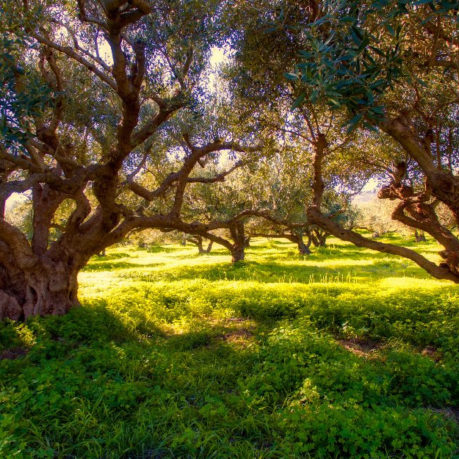
The story of the olive tree in rhymes
Travel with your mind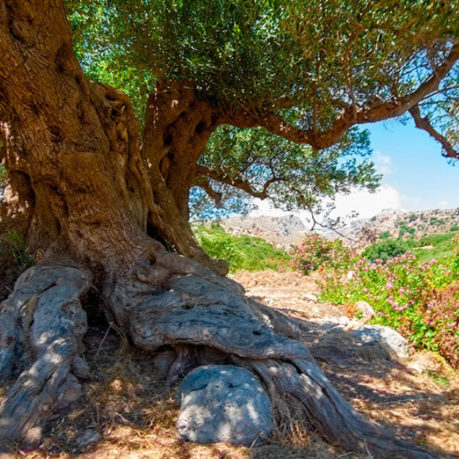
The story of Olive tree in rhymes
Travel with your mindAttention: The above article / content is for informational purposes only. Before using any recipe, or before changing your eating habits, consult with your healthcare professional or nutritionist. If you are taking medication, make sure there are no side effects.
1. Maria and Nikos Psilakis “Traditional Cretan Cuisine - The Cretan Diet miracle”, Karmanor Publications, Heraklion, 1995
2.cretan-nutrition.gr
3. Nikos and Maria Psilakis, Elias Kastanas “The olive tree Culture - Olive Oil”, Karmanor Publications, Heraklion, 2003
4. Dissertation “Study and prediction of the Stability of the phenolic components of olive oil – Oleocanthalic acid: A new product of olive oil oxidation”. Anna Tsolakou, National Kapodistrian University of Athens, Department of Pharmacy.
5. Dissertation “Olive growing from the Minoan era until today” - Despina Aplada. Technological Educational Institute of Crete, School of Agricultural Technology, Department of Crop Production.
6. oliveoiltimes.com
7. Oxidative stress status in elite athletes engaged in different sport disciplines
8. Antioxidants: what role do they play in physical activity and health?
9. Healthline.com
10. pubmed.ncbi.nlm.nih.gov
11. sciencedirect.com